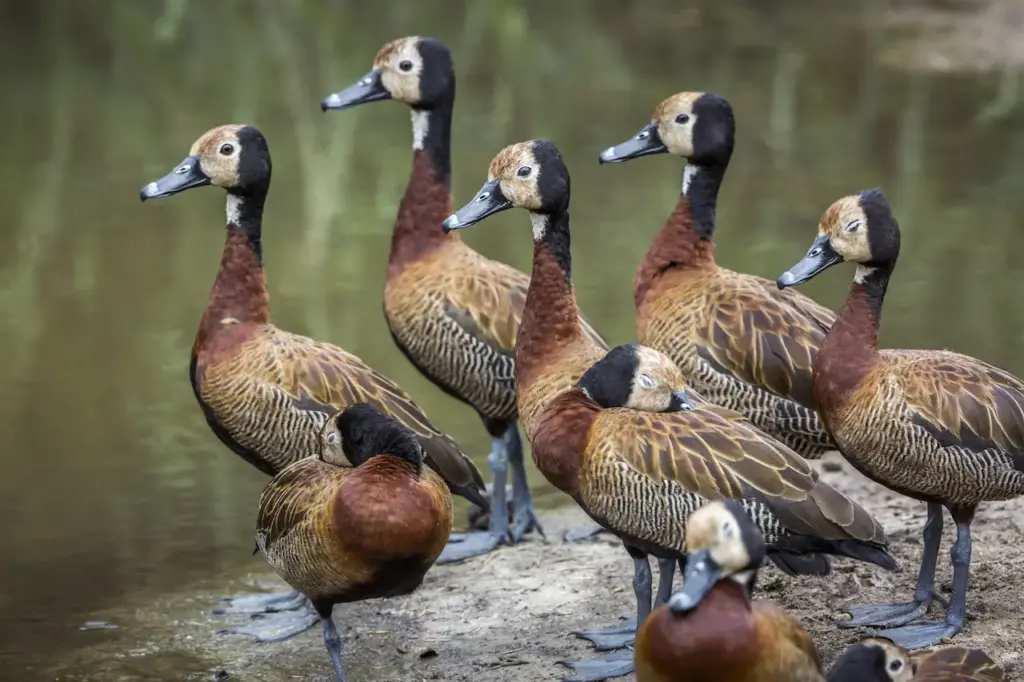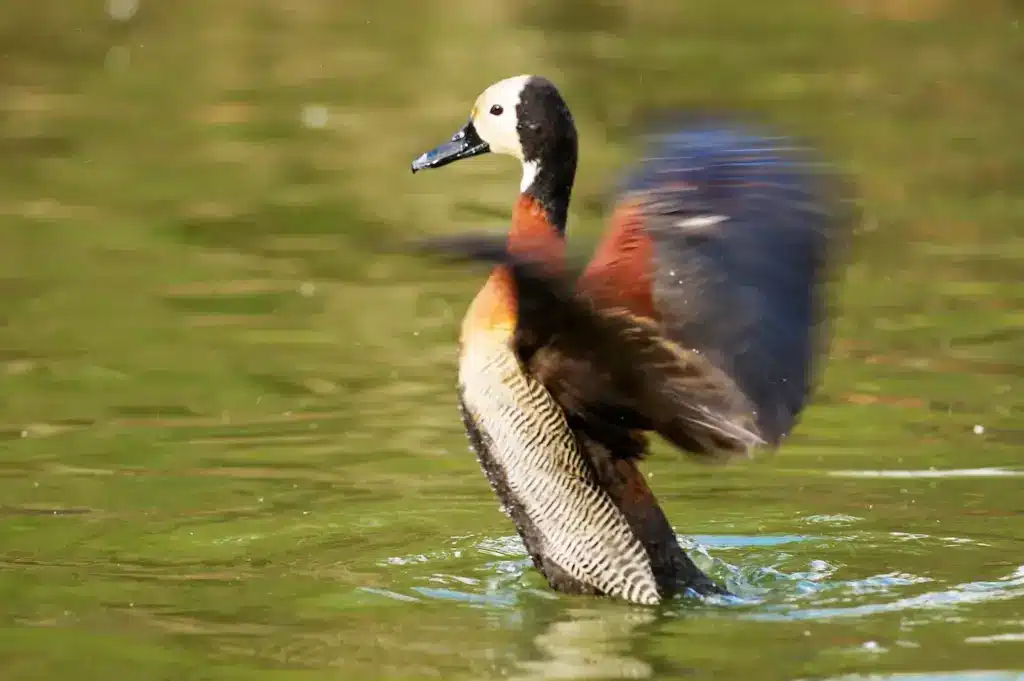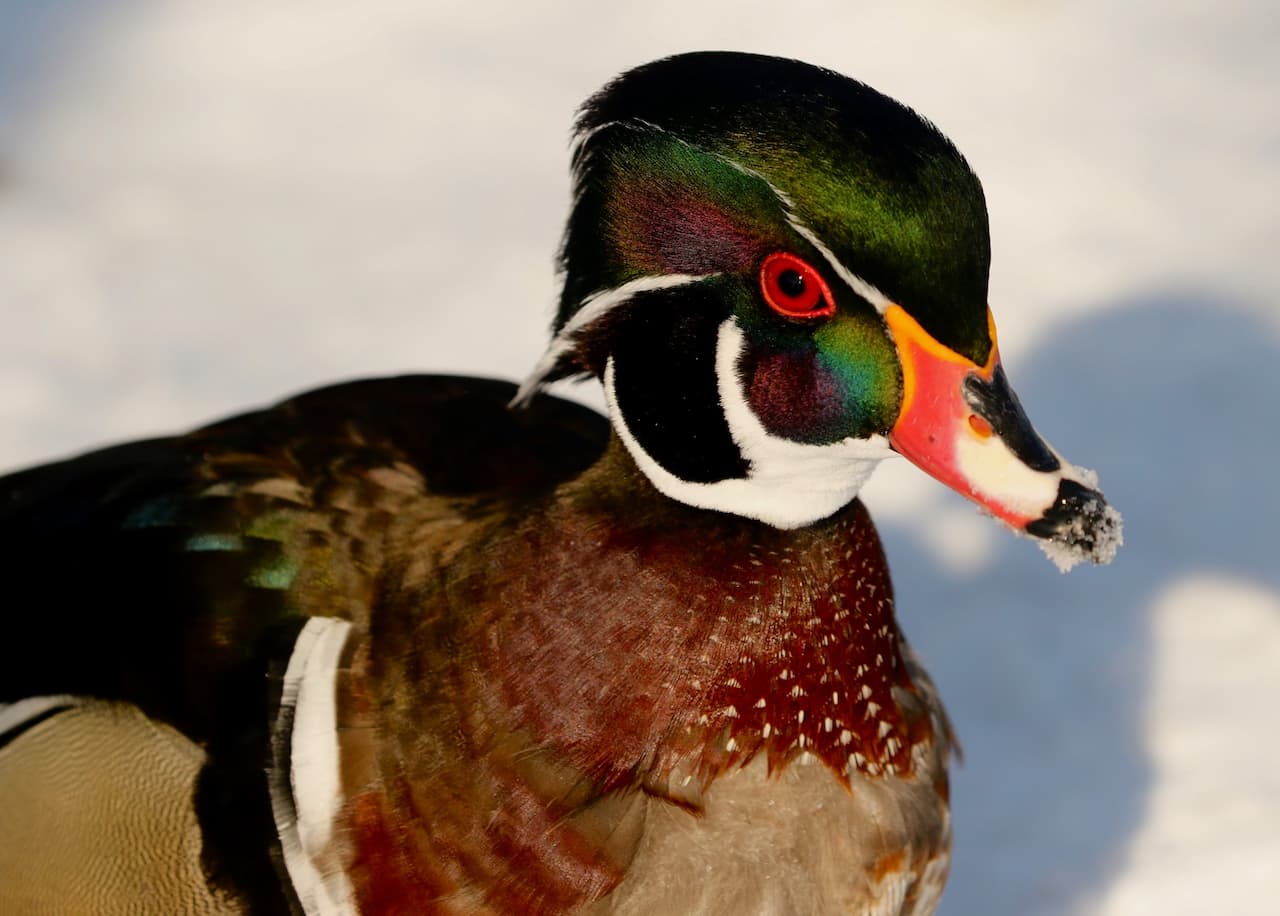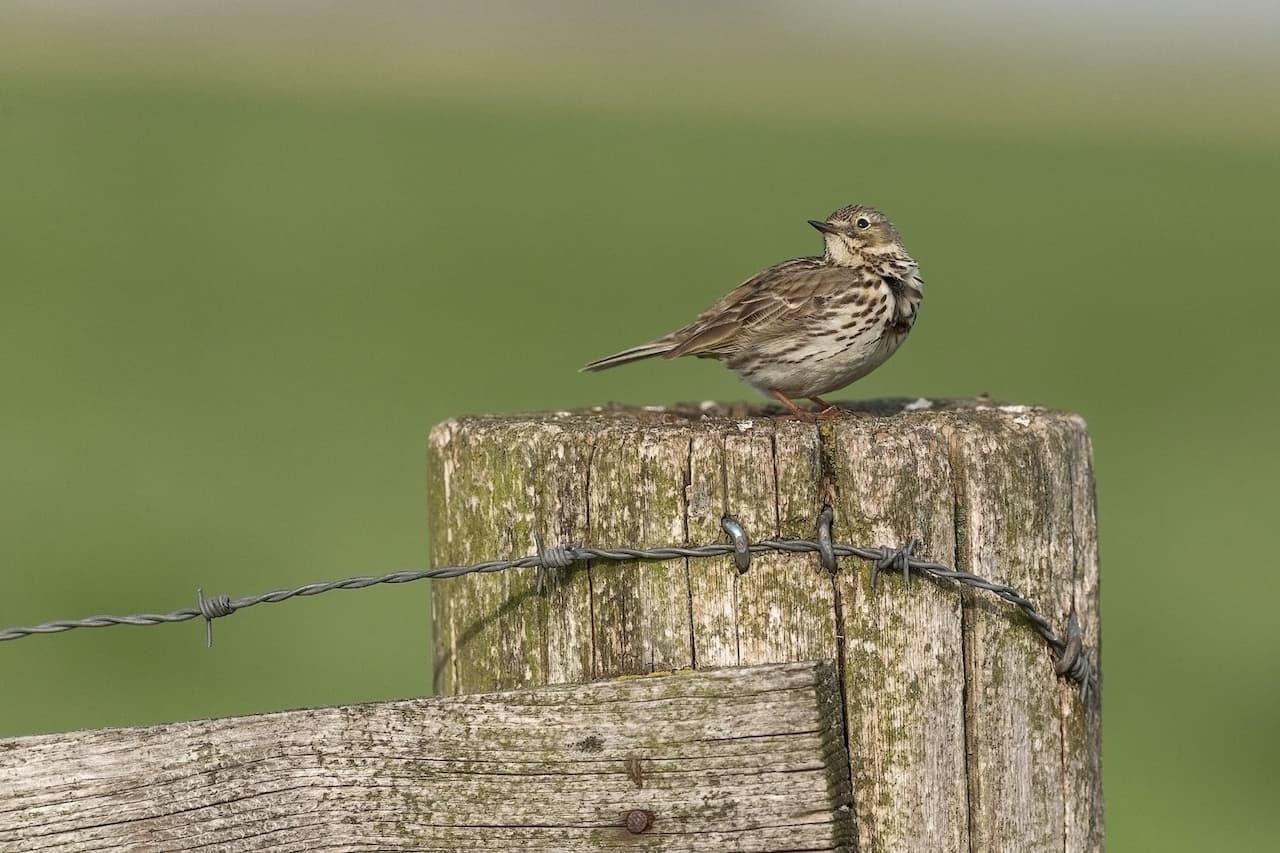White-faced Whistling Duck
The White-faced Whistling Duck Dendrocygna viduata, is a whistling duck that breeds in sub-Saharan Africa and much of South America.
This species is gregarious, and at favored sites, the flocks of a thousand or more birds arriving at dawn are an impressive sight.
Description
This species has a long grey bill, long head, and longish legs. It has a white face and crown, and a black rear head. The back and wings are dark brown to black, and the underparts are black, although the flanks have fine white barring. The neck is chestnut. All plumages are similar, except that juveniles have a much less contrasted head pattern.

Range and habitat
The habitat is still freshwater lakes or reservoirs, with plentiful vegetation, where this duck feeds on seeds and other plant food.
Ecology
This is an abundant species. It is largely resident, apart from local movements which can be 100 km or more.
Breeding
It nests on a stick platform near the ground, and lays 8-12 eggs. Trees are occasionally used for nesting.
Call / Vocalization:
As the name implies, these are noisy birds with a clear three-note whistling call.
Conservation
The White-faced Whistling Duck is one of the species to which the Agreement on the Conservation of African-Eurasian Migratory Waterbirds (AEWA) applies.
References
- BirdLife International (2004). Dendrocygna viduata. 2006. IUCN Red List of Threatened Species. IUCN 2006. Retrieved on 11 May 2006. Database entry includes justification for why this species is of least concern
- Wildfowl by Madge and Burn, ISBN 0-7470-2201-1

More Duck Resources
Diet / Feeding:
White-faced Whistling Ducks feed on seeds and other plant food.
Ducks generally feed on larvae and pupae usually found under rocks, aquatic animals, plant material, seeds, small fish, snails and crabs.
Feeding Ducks …
We all enjoy ducks and many of us offer them food to encourage them to come over and stay around – and it works! Who doesn’t like an easy meal!
However, the foods that we traditionally feed them at local ponds are utterly unsuitable for them and are likely to cause health problems down the road. Also, there may be local laws against feeding this species of bird – so it’s best to check on that rather than facing consequences at a later stage.
- Foods that can be fed to Ducks, Geese, and Swans to survive cold winters and remain healthy when food is scarce in their environment.
Please note that feeding ducks and geese makes them dependent on humans for food, which can result in starvation and possibly death when those feedings stop. If you decide to feed them, please limit the quantity to make sure that they maintain their natural ability to forage for food themselves – providing, of course, that natural food sources are available.





